RHINOCEROS
Design Process Notes
Theatre Fairfield
director: Jackob G. Hofmann
sets: Lynne Porter
lights: Lynne Chase
costumes: Julie Leavitt
Are Rhinos Green?
These are my notes from the first design meeting:
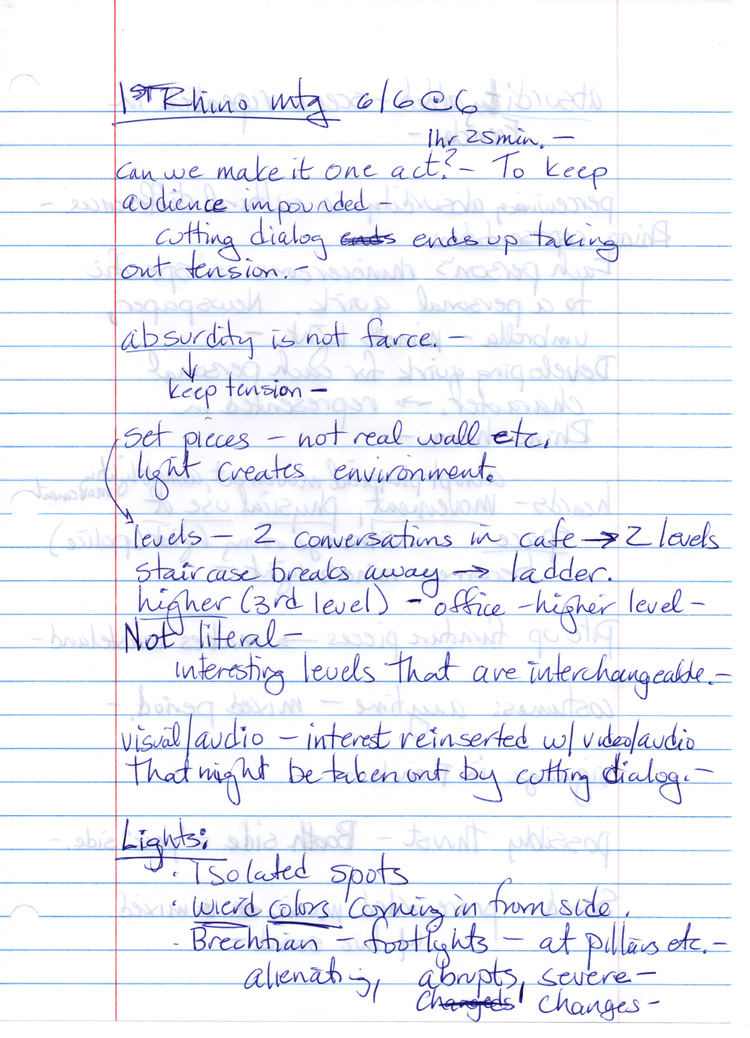
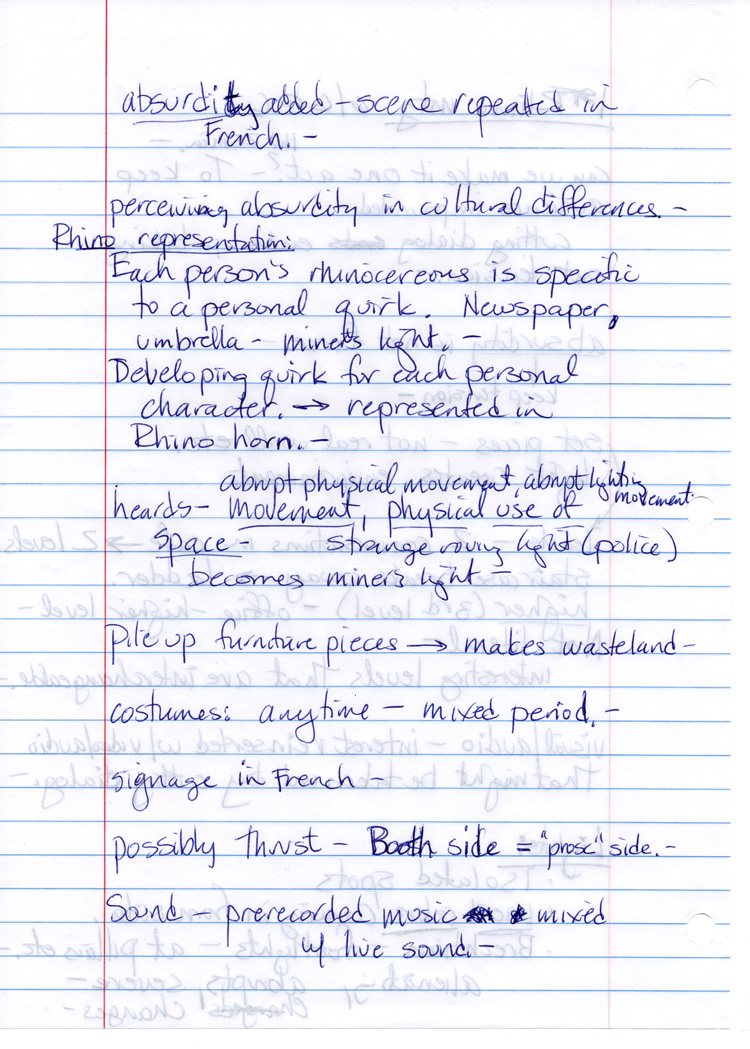
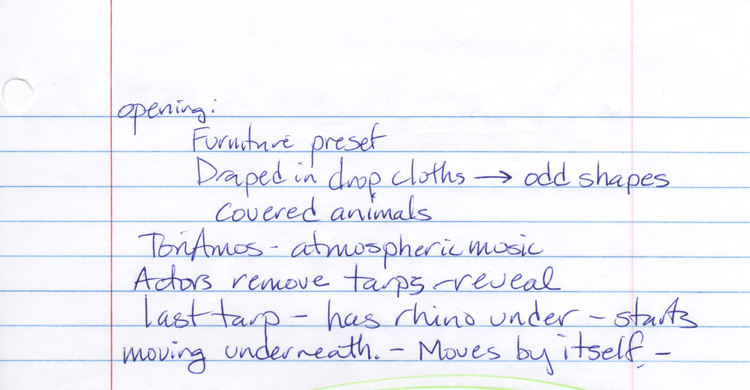
Almost all of these ideas were explored. Some were changed, but most found their way into the production in some form.
Footlights
A question arose--should the footlights be recessed into the set platforms? Or should they be mounted "above ground" on the edge of the playing area? These two options result in different light and shadows. Using a simplified drawing of the set we had at that point, I prepared some computer drawn sketches to explore the options.
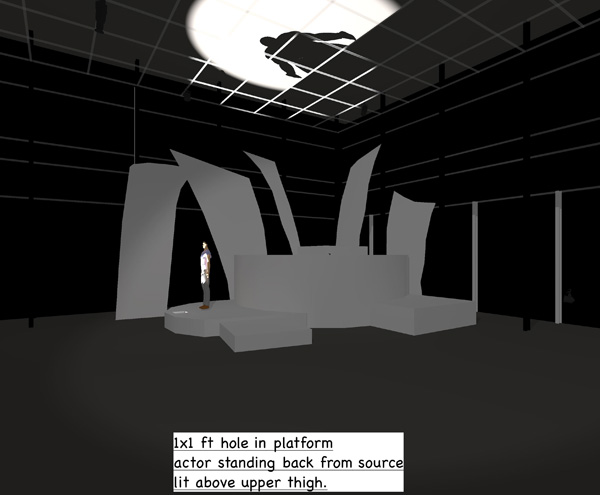
If a footlight is recessed into a 1 foot square hole in the platform, the actor is not lit head to toe. How much of him is lit depends on how far away from the hole the actor stands. In this example, actor is lit above the upper thigh. His shadow lands on the ceiling.
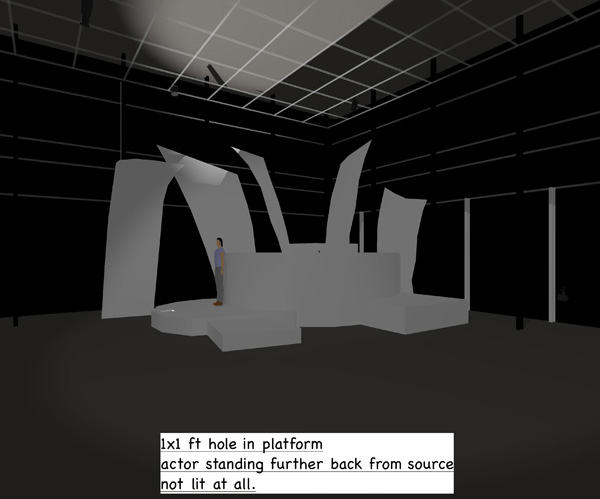
If the performer stands sufficiently far upstage, he won't be lit at all.
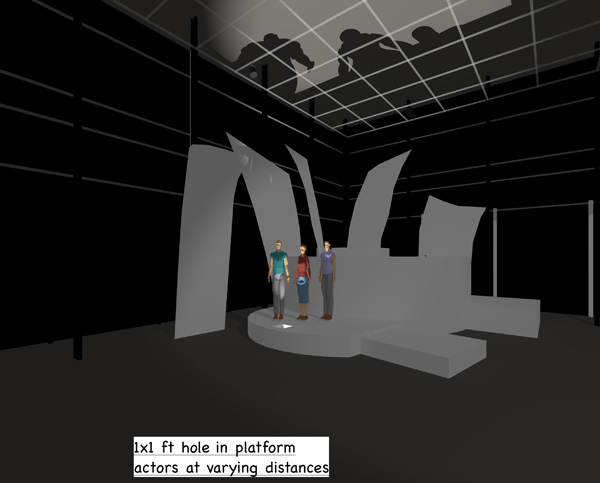
Here, 3 different performers are standing at 3 different distances from the light. Each is lit a different amount. Again, shadows land on the ceiling.
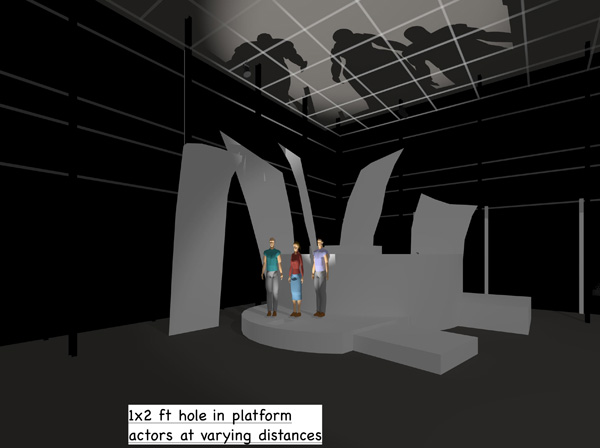
If the hole is expanded to 1x2feet, the actors are more completely lit.
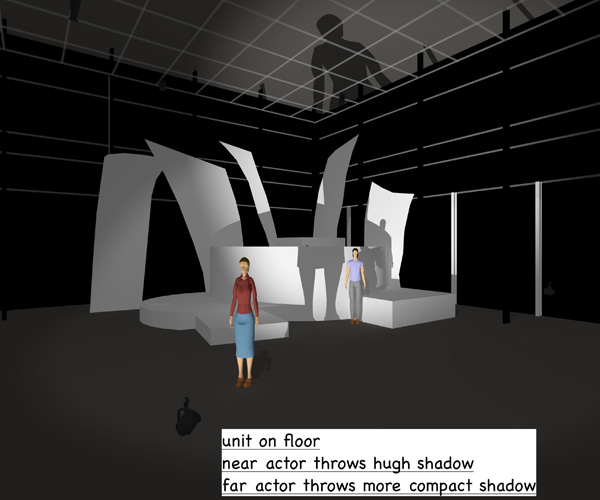
If we put a light on the stage floor, without any restrictions caused by a recess, two different things happen. First, the actor can be completely lit. Second, the shadows can land on the set...at least partly.
We ultimately chose to use this last method.
Shadows
Another idea arose--what if we used shadows depicting one or two horns to support the Logician's "proof" of how many horns each rhino had? This was a lighting issue. How would we show these shadows? Would they include the performers' entire bodies, or just their hands?
I prepared rough sketches of some possibilities. (Again, the set, as drawn here, is early in it's development. I drew generic rectangular screens to receive shadows. Moving ahead with this idea would require collaboration with the set designer. I wanted to nail down whether this would be needed.)
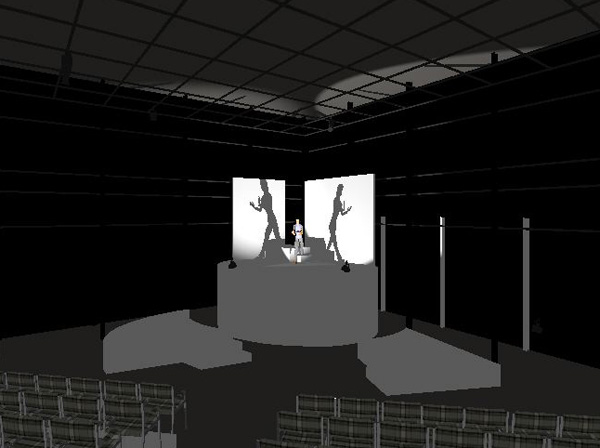
One performer, two sources on platform edge, 2 larger than life full body shadows
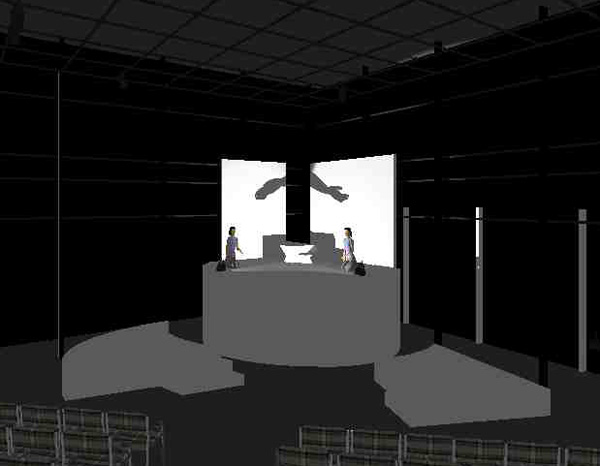
Two performers, making hand shadows using sources on edge of platform. Two larger-than-life shadows of hand and forearm.
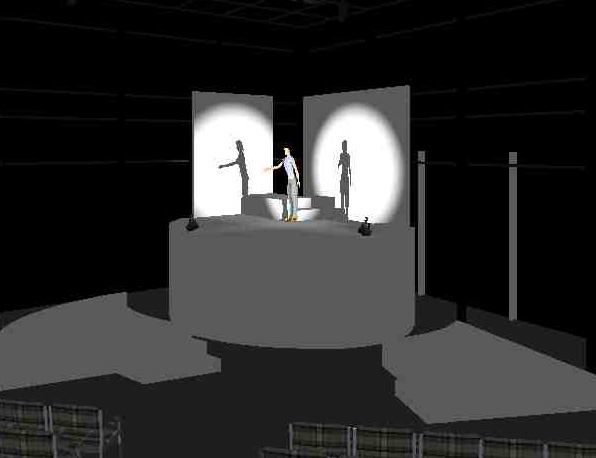
One performer, 2 sources hung across the theatre (out of the picture) at roughly chest high. Two life-size shadows. (The instruments that are visible on the stage platform are not "on" in this drawing.)
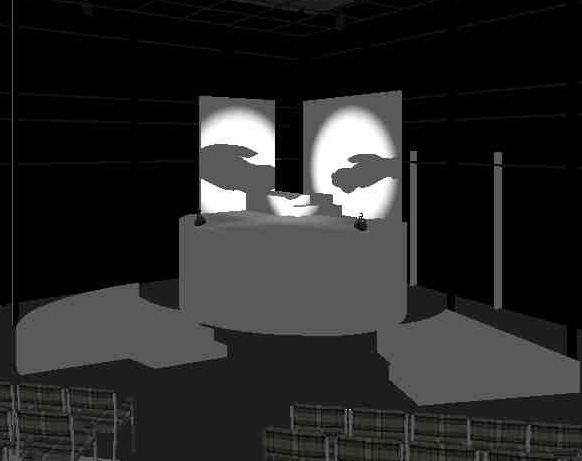
Two sources hung across the theatre from the projection surface. One performer at each source making hand shadows.
In the end we chose a different way to do this scene. We had the waitress stand on the "barrel" and do an American Sign Language interpretation of the Logician's proof. I simply lit her and let her carry the scene.
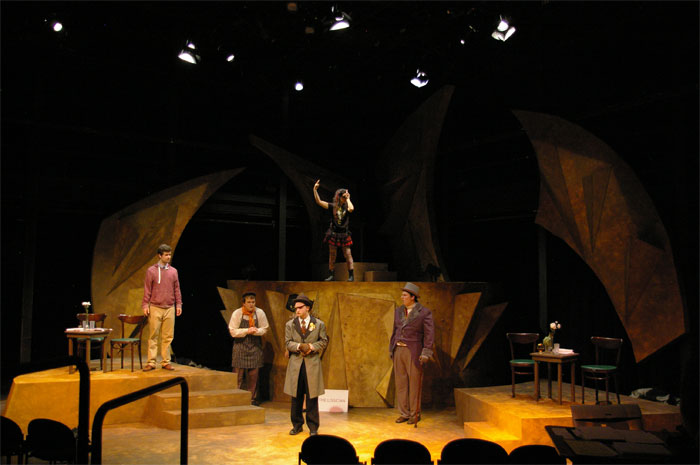
The scene in performance.
Are Rhinos Green?
A third idea that we debated--should the rhinos be green?
Of course, rhinos in real life are not green. Making them green in the show seemed cliche. But, there are lines in Jean's transformation scene about his skin turning green. We began with the working hypothesis that we would use green follow spots for the transformation scene, but that rhinos elsewhere in the show would have no special color.
Then, I began working on some sketches for the final invasion of the rhinos, when Berenger finds himself isolated and alone. Here are two options.
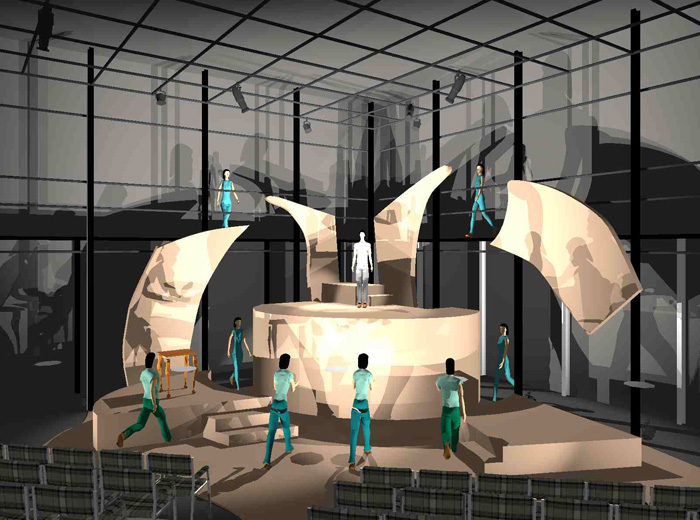
Berenger isolated on barrel surrounded by rhinos. (The set design process was further along at this point and a more advanced, but still simply drawn version of the set is shown.)
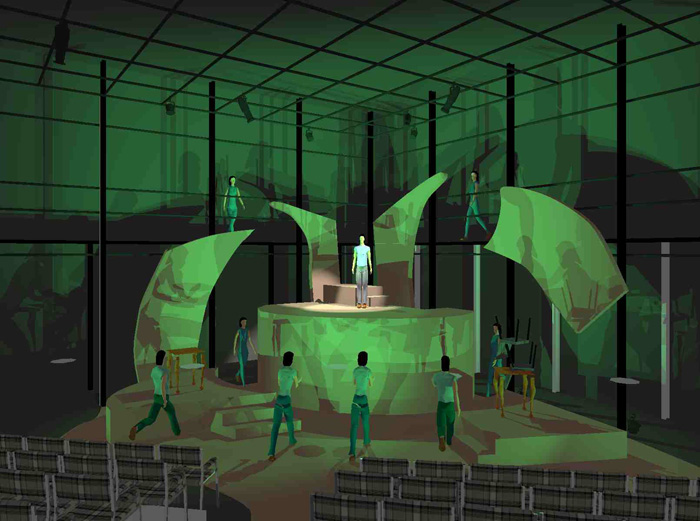
This is the same look but with green in the footlights. Berenger is further isolated in his own puddle of white light while the rest of the world is green.
Despite the risk of seeming cliche, we found this green look compelling. Now, the rhinos were officially green. From a lighting standpoint, it now became about green light encroaching on the space whenever the rhinos were present. In the finale, the entire world was green, except for Berenger in his own white puddle on the barrel top.
A Brief Journey Through the Show
Here are 2 photos of Lynne Porter's expertly constructed set model. My computer drawings don't have the character that the set had, and my show photos don't reveal it completely. So this illustrates what we had on stage.
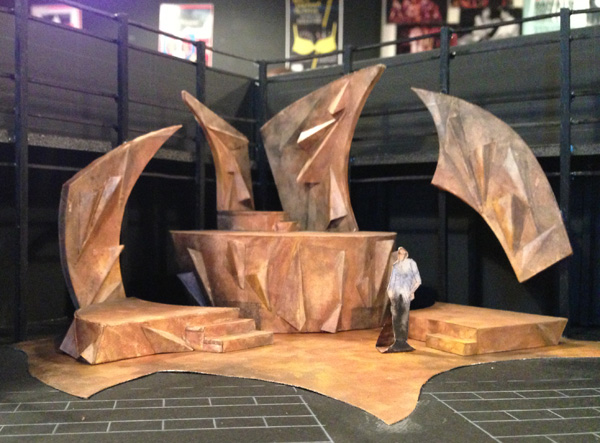
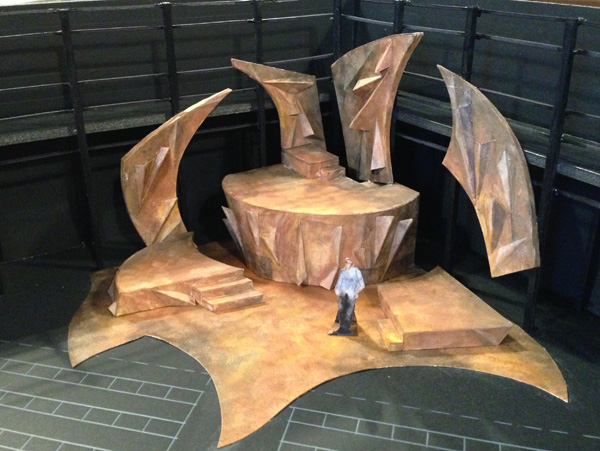
Set design and model construction by Lynne Porter. Photos by Lynne Chase.
Opening

To open the performance, we did a montage in which actors uncovered scenery pieces and arranged furniture from piles covered in sheets. Using this drawing, we chose to light the furniture piles with slashes of light inspired by the triangular projections on the set. (see model photos above.)
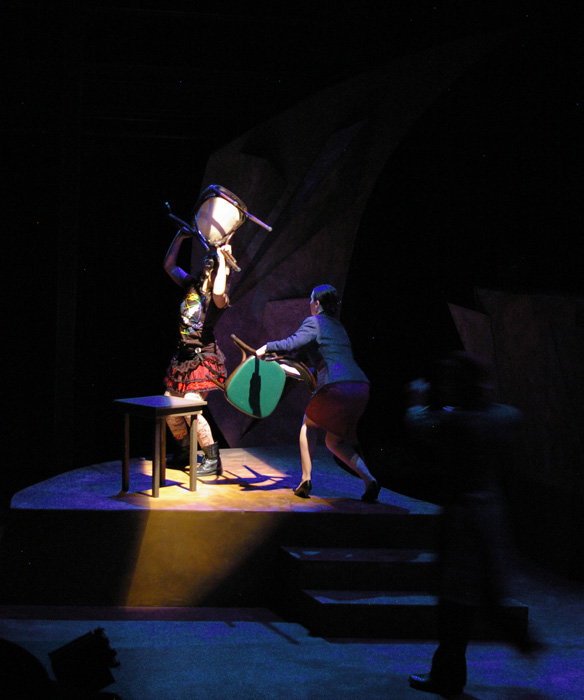
The look in performance
The cafe scene
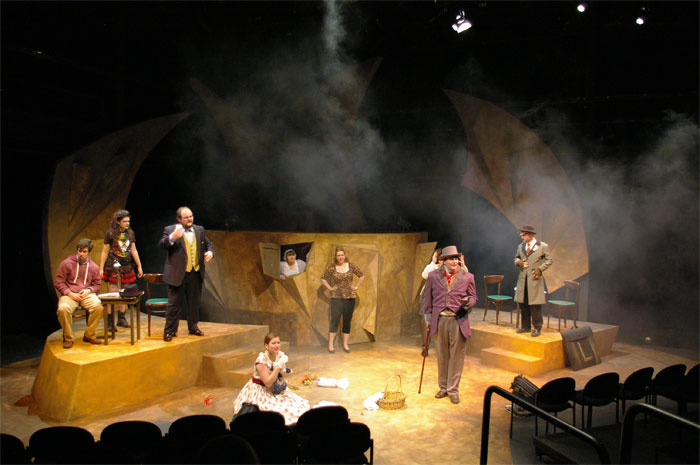
Hot, dry and dusty.
The Office Scene
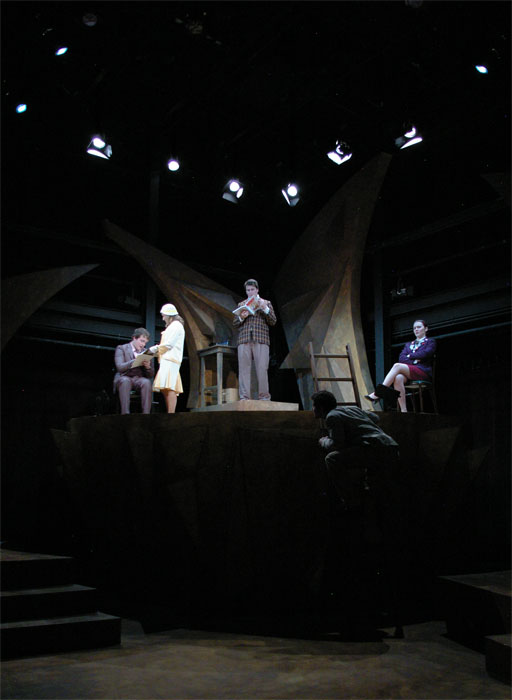
Harsh cold office light. Berenger (on ladder) is trying to sneak in late.
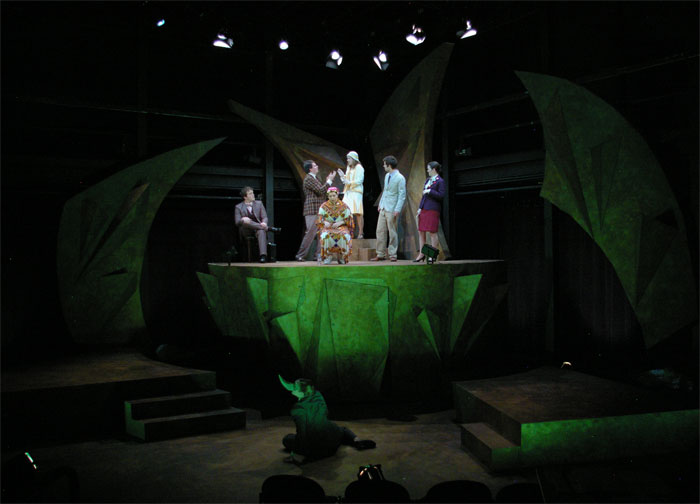
Monsieur Boeuff has converted to a rhino. Rhino world is green. Office is still flourescent.
Jean's Transformation Scene
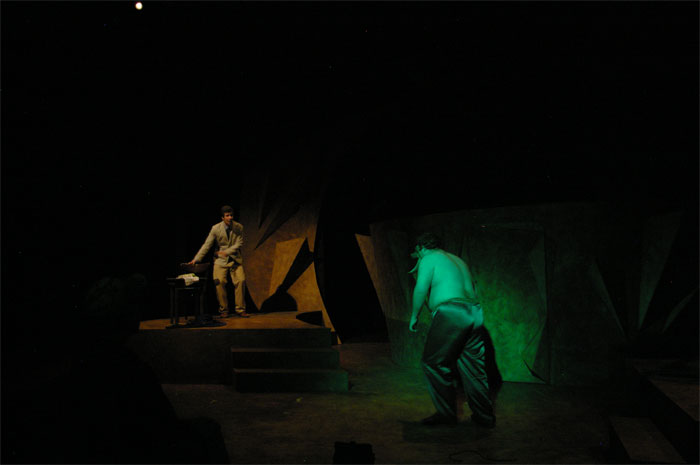
We used green followspots to make Jean progressively greener as he morphed into a rhino. This required collaboration with the director, who very adeptly blocked the actors to remain separated from each other so green spot spill never hit Berenger.
The Berenger Defiance Scene

Rhinos peer in from the periphery. The Logician (on top of the "barrel") has transformed into a rhino.
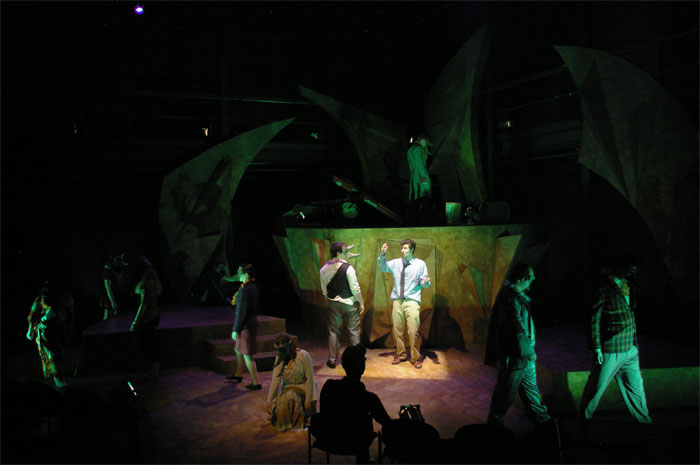
Rhinos are closing in and are about to take Daisy (down center, kneeling in the fainter light) when Berenger isn't looking.
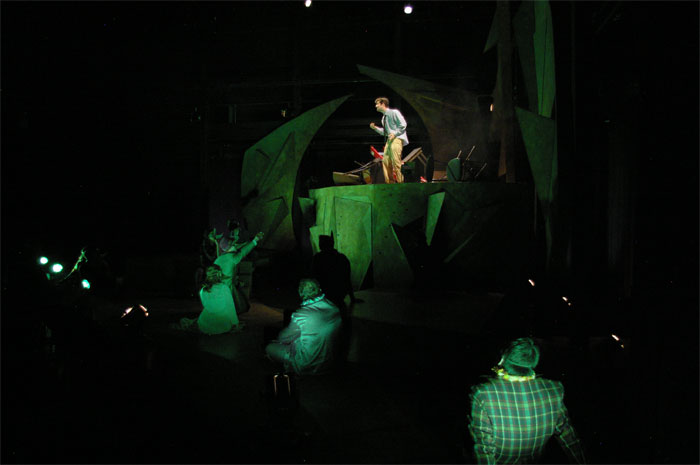
Berenger's final monolog. He is all alone in his pool of white light, totally surrounded by the green rhino world.
Return to Process Homepage
